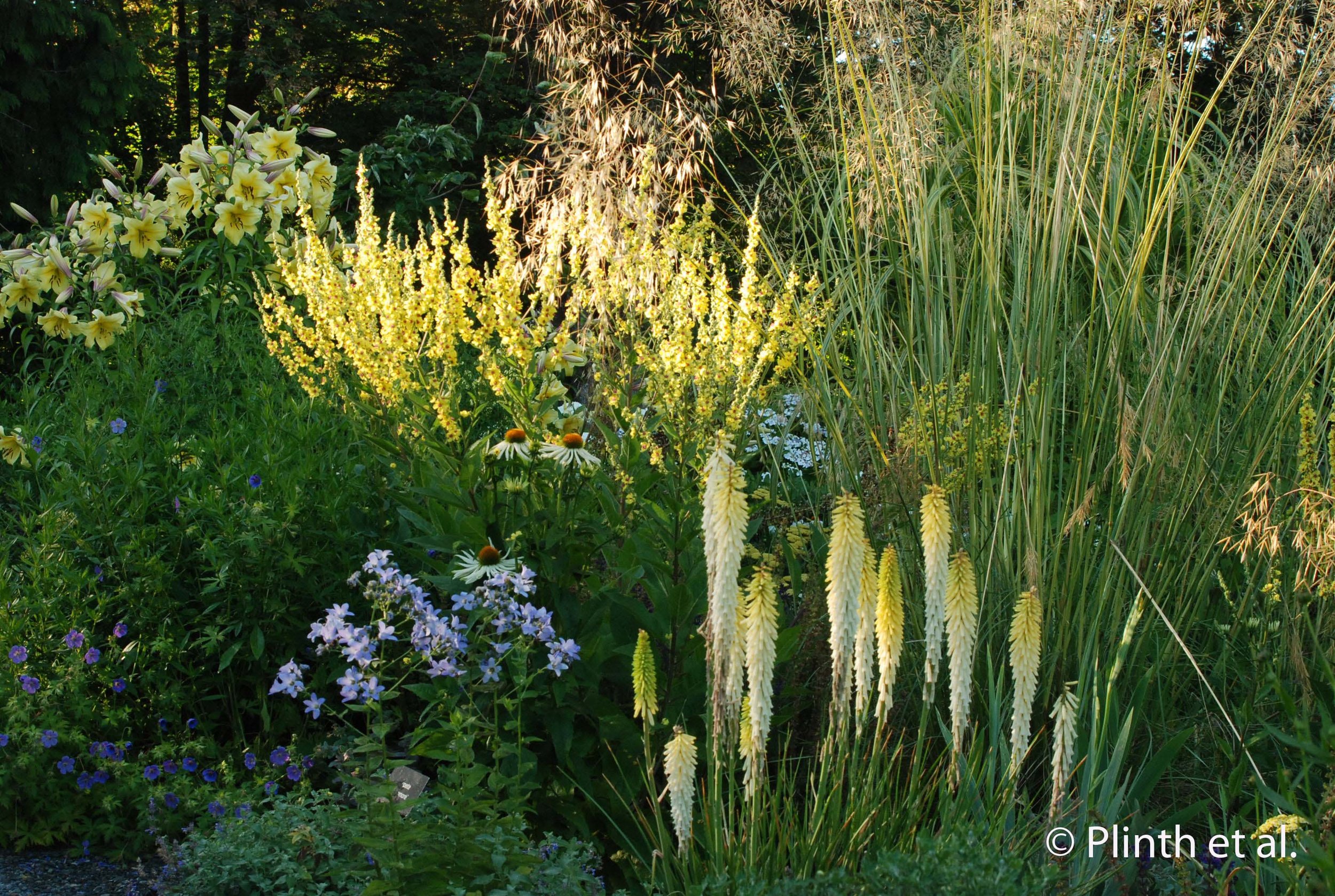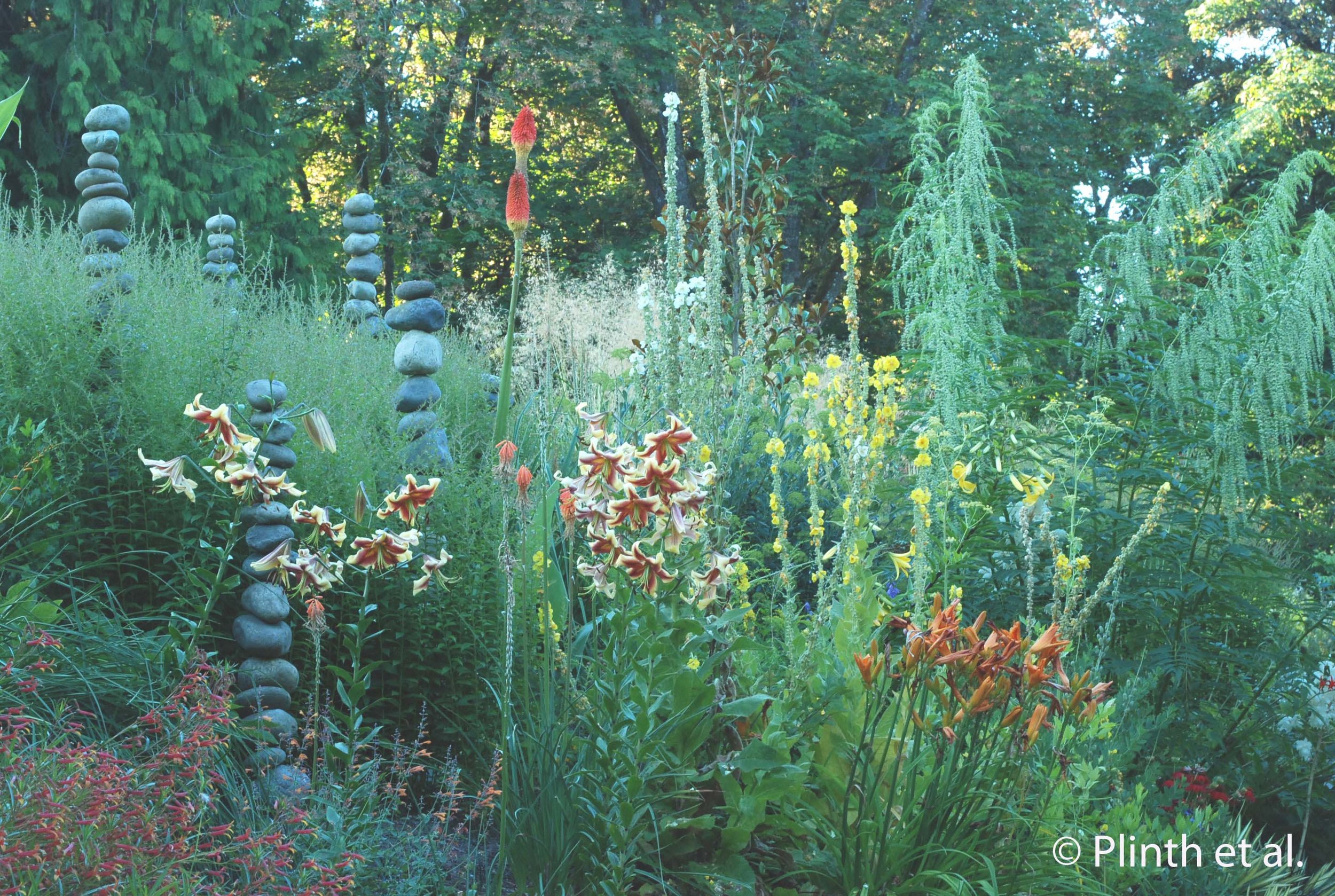Northwest Perennial Alliance's Perennial Border at Bellevue Botanical Garden
As any seasoned gardener will tell you, revamping or renovating an established garden isn't an easy feat completed within a day's work. Perennial weeds take hold, weaker plants fade away, and woody plants grow out of scale. Such challenges faced Charles Price and Glenn Withey when the Northwest Perennial Alliance (NPA), modelled after England's Hardy Plant Society, asked them to redesign its Perennial Border at Bellevue Botanical Garden, Washington State, seven years later after they resigned from overseeing its maintenance. Price and Withey, two of the original designers, are well known in the Pacific Northwest for their colorful artistry with plants, uncommon and common. They are too seasoned gardeners who gardened 'feverishly' for 7 years in the 1980s and currently oversee the Dunn Gardens (the Curator's Garden is a must-see for this pair's consummate talents). First conceived in 1992, the Northwest Perennial Alliance Perennial Border was meant to inspire and educate the horticultural community in the Puget Sound region. Its fame later spread throughout the North American gardening circles, and demonstrated that the Europeans did not necessarily had the hegemony on mixed or herbaceous borders. Certainly the region's mild climate with warm days and cool nights, well suited for herbaceous perennials, didn't hurt either.
When I visited the border in 2005, it had none of the brilliance acclaimed and photographed in books and magazines. Instead what greeted me was a weedy overgrown tangle of perennials and grasses, and any remnants of its former glory failed to redeemed the glaring fallacies, and I left disappointed wondering if the Northwest Perennial Alliance had lost interest in maintaining it. In the interim, tensions had run high between the Border Committee and the NPA Board, which wanted a renovation fiercely opposed by the former. After the Border Committee dissolved, the NPA brought in Longwood Professional Gardeners' graduate George Lasch to supervise the transformation. Lasch was realistic about the reasons behind the Border's undoing, saying: "Great gardeners are not always necessarily great designers. It became a classic gardening-by-committee problem, and the editing choices made a decade ago led to problems that we need to address today" (CityArts). Changes afoot included reduced maintenance regimes, better visitor accessibility, and a connection to the rest of Bellevue Botanical Garden. First a bulldozer was brought out to wipe out the area after the desirable plants were saved. Gone were the golden carpets of creeping jenny (Lysimachia nummularia 'Aurea'), purple barberry, Siberian irises, and geraniums. “Now the garden has been given a second chance. I will be the first to admit that the renovation has been controversial, as some people believe nothing should change. Life however is full of changes and surprises, and no matter how hard we try and hold on, things cannot and will not ever remain the same.”
Curious about the border's second transformation, I returned again this year, relieved to discover how beautiful the plantings had matured. The cages for protecting the trees against rabbits were still in place, but they were sculptural, blending with the plants. Instead of the Rothkosque blocks of bright colors in the original design, the plantings have become drift-like and painterly as if Price and Withey subconsciously instilled a looser, relaxed look. Such drifts enable the plantings to be presentable and interesting from each vantage point afforded by the border's sloping terrain split by two pathways. As part of the shift towards less maintenance, Price and Withey avoided aggressive self-seeding plants (Astrantia was a major problem in the previous border) or woody plants requiring coppicing (pollarded Catalpa grew out of scale when pruning was neglected for some time). Roses hardly make their presence as the Border used to have roses trained over hoops. Nevertheless, these sacrifices did not diminish the Border's beauty.
The Perennial Border is not monochromatic and a fail-safe approach towards color is not the chief aspiration of Price and Withey especially when the clear summer skies of the Pacific Northwest call for chromatic intensity of equal measure. Soft or cool colors are unexpectedly sharpened with brighter ones (burgundy with red orange; blue with bright orange and burgundy, pink with yellow). Had the Border been graduated in color, the instinct of the viewer would be to walk quickly past the plantings rather than a slow pacing to appreciate an unorthodox combination here and there. While perennials are the principal focus, trees and shrubs are not underrepresented. They may be seem absent in these photographs, but they require more time to fulfill their mature sizes and the unusual ones used are not always readily available in large sizes without being prohibitively expensive. Grasses, especially Panicum and Miscanthus temporarily step into the role of the woody plants.
The renovation still creates mixed feelings within the horticultural community - one employee at Molbak's confided that she liked the original reincarnation better as it was more lush and fuller. As controversial as the project was for the horticultural community, it is a recurring reminder that no garden exists in inertia and a zealous attitude towards preservation can be detrimental rather than helpful. The 'missing' lushness will arrive as the garden moves from its adolescent stage towards maturity, and under the capable eye of George Lasch, the creative input of Price and Withey, and the NPA's volunteer crew. ~Eric








